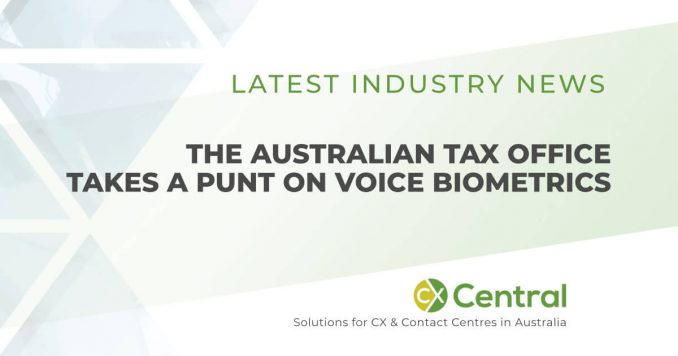
Australian Tax Office implements Voice Biometrics to deliver a range of improvements
The Australian Taxation Office is hoping its punt on voice biometrics pays off as the financial year comes to a close, with its deputy commissioner John Dardo confident the technology provides efficiency without compromising security.
The ATO deployed Vocal-Password in August last year and FreeSpeech in April this year, the first deployments of their type in Australian call centres, and Mr Dardo said the technology was delivering better customer experience and swifter resolutions for those seeking assistance.
“No one wants to be on a call to an agent longer than they need to, but we also need to ensure that for people who call us regularly, convenience and ease of access are effectively balanced with our mutual need for security,” he said.
VocalPassword and FreeSpeech are products of US-based Nuance Communications, whose voice recognition and language processing technology is already pervasive in the consumer space.

From Apple’s Siri to virtually every car manufacturer that has voice integration, Nuance is in the game.
However, the company is starting to score deals in the enterprise space as well.
According to Nuance’s global general manager and executive vice president of enterprise, Robert Weideman, government departments are quickly picking up on the voice biometrics trend and saving millions of dollars.
In Australia, Nuance has signed deals with Telstra, Westpac, Optus and Vodafone, and agencies including the Department of Human Services and the Department of Immigration and Border Protection.
The tax agency has 650,000 voice prints in its database and Mr Weideman said the FreeSpeech program, which has been operational for about six weeks, allows users to opt-on to replace a PIN and password with their unique voiceprint.
After a one-time setup process of about one minute, in which the user repeats one sentence three times, authentication for subsequent calls takes about 25 seconds, allowing the customer service agent to dive straight into dealing with an inquiry while the validation software runs in the background.
The technology analyses more than 100 unique voice characteristics while the customer speaks, and compares them with the relevant stored voiceprint.
“Every person’s voice is unique in the same way their fingerprints or irises are unique,” Mr Weideman said. “Our system can detect patterns outside the frequency of the human ear.
“We can take the voice signal and turn that into a mathematical equation, which is effectively a set of numbers that we store.”
Mr Dardo said the voice recognition programs allowed the agency to implement a “secure, fast and easy way to verify a caller’s identity”.
Nuance’s program reduces each call time by a couple of minutes, which adds up quickly for high-volume call centres such as the ATO. According to Mr Weideman, if a call centre received five million calls a year it saved an average of $2 million by replacing knowledge-based authentication with voice biometrics.
With the voice authentication market poised to hit $750m globally by 2017, Mr Weideman said the ATO deployment was hopefully a signs of things to come.
“The Australian government’s deployment will surely open the doors for more agencies and companies to follow suit.”
Recommended further reading: Does ageing impact the accuracy of voice biometrics?
Find a list of suppliers for the latest contact centre technology including voice biometrics on our free CX Directory >>>




Be the first to comment